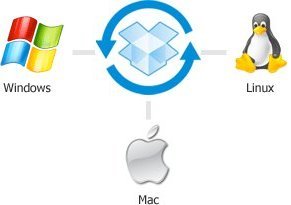Archive for October, 2010
MilkSync for Microsoft Outlook is here!
Tags: linux, microsoft, Remember the Milk, VMware The folks at Remember the Milk have finally come out of beta on their “MilkSync for Outlook” plugin (only for Pro users, sorry to all you non-subscribing users, but you can upgrade to a Pro account).
The folks at Remember the Milk have finally come out of beta on their “MilkSync for Outlook” plugin (only for Pro users, sorry to all you non-subscribing users, but you can upgrade to a Pro account).
It does exactly what it claims to do, and does it well. I highly recommend installing it, if you’re a Pro user (I am!).
Remember to adhere to the precautions: Backup, backup, backup!
I only use Microsoft Outlook 2010 in a VMware Workstation VM, so I rarely keep it loaded all the time, but for those desktop users who spend a lot of time in Microsoft Outlook, this is going to help!
Now here’s why I can’t use it: It requires running Microsoft Outlook. Since I use a BlackBerry device, and carry that with me all the time. I have it set to sync every hour, with the RTM servers.
If I move to MilkSync for Outlook, I lose that functionality, and the only place I can create Tasks that sync to RTM, is inside Outlook running inside that VM, running on a laptop/desktop machine. That doesn’t fit my “always on, always connected” methodology, but it might be perfect for everyone else!
I also run Linux, and the only access I’d have would be by virtualizing Windows + Outlook in that host environment.
Give it a try, and see if you like it. They love feedback, so let them know!
SOLVED: Sharing TweetDeck settings across multiple Windows and Linux machines
Tags: Adobe, dropbox, servers, sync, TweetDeck, VMware I’ve been using TweetDeck for quite some time on Linux, after I managed to get getting Twhirl working on Linux under 64-bit Adobe Air.
I’ve been using TweetDeck for quite some time on Linux, after I managed to get getting Twhirl working on Linux under 64-bit Adobe Air.
TweetDeck is a lovely app, graceful and very useful. It has its minor visual and UI bugs, but it’s the best I’ve seen out of the other hundreds of Twitter apps out there… and it’s 100% free.
I have 3 laptops I use on a regular basis running both Windows and Linux. I’m not always on the Linux laptop, but I wanted to make sure that my TweetDeck settings on my Windows laptops were identical to the ones on my Linux laptop, including all of my searches, columns and other settings. I plug one of my Windows laptops into my television, so I can use the larger screen as my monitor (see below).
Read the rest of this entry »
Techniques for slowing down/stopping external attacks on your Apache server
Tags: Apache, hacking, linux, servers I’ve been running an Apache server for over a decade, serving up hundreds of websites over the years, and one thing remains constant: abusers attacking Apache, looking for a way in, or a way to DDoS attack your server so others can’t get to the content you’re providing.
I’ve been running an Apache server for over a decade, serving up hundreds of websites over the years, and one thing remains constant: abusers attacking Apache, looking for a way in, or a way to DDoS attack your server so others can’t get to the content you’re providing.
We don’t call these people ‘hackers‘, ‘crackers’ nor do we even call them ‘criminals’. They’re just idiots, and they’re easily stopped.
The rest of this post will show quite a few ways to slow or stop these attackers from taking down your Apache web server or abusing it in any way.
Read the rest of this entry »
SOLVED: Reflashing your Buffalo WHR-HP-G300N to the stock firmware
 This problem is discussed at great length on many forums, but almost every solution proposed does not work as described. Let me explain…
This problem is discussed at great length on many forums, but almost every solution proposed does not work as described. Let me explain…
The Buffalo WHR-HP-G300N as shipped from Buffalo Wireless comes shipped with a Buffalo-specific, modified version of the Open Source dd-wrt project. Their version of the firmware has some advanced features not available in the public community version of dd-wrt.
The Buffalo dd-wrt firmware image is also encrypted, so you can’t directly flash it to the WHR if you’ve already flashed your Buffalo router with the community version of dd-wrt or OpenWRT. You can’t even use the stock Buffalo CD installer to “reset” the router back to the stock firmware. That doesn’t work.
Once you flash off the Buffalo-supplied firmware, you’re stuck without it.
Until now…
Read the rest of this entry »
